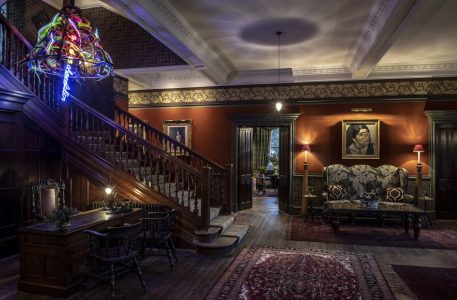St. Andrews:
The Royal and Ancient Home of Golf
When I think about the places that gave birth to our most beloved sports (the Massachusetts YMCA where James Naismith created basketball, or the eponymous town of Rugby in Warkwickshire, England), few resonate as strongly as St. Andrews—and specifically The Royal and Ancient Golf Club, the birth place of golf.
Centuries after birthing the game, St. Andrews remains a quaint little town on the coast of Fife, the links occupying almost as much space as the rest of the village. To this day the links are owned by the villagers, including those attending the third-oldest university in the English-speaking world.

And just as this is a place where the land meets the sea and the town meets the gown, one can’t help but feel that in St. Andrews, golf merges with the people, the community and the culture, to make up the very essence of this place. You can hardly tell where the course ends and the town begins, because for all intents and purposes, they’re one and the same.
Though this is the original approach to golf, today it seems almost refreshing, as so many courses have become fenced-in oases, designed to provide a reprieve from the world around you rather than an introduction to it. It’s a stark contrast to the golf courses I grew up with in Georgia, the private grounds of which were carefully cultivated to make you forget about the strip malls and Hooters restaurant down the street.

And speaking of my roots, as a good Georgia boy I can’t think of St. Andrews without recalling the great Bobby Jones’ love/hate relationship with this place. In 1921, his youthful spirit summarily broken by The Old Course’s punishingly deep bunkers, aggressive ocean winds and unforgiving rough, Jones walked away just 11 holes into his third round and proceeded to tear up his score card, fussing like a spoiled child that it was all so unfair. Six years later, a more mature Jones not only returned to The Old Course, but captured The Open. Having become enamored with both the course and the town, he paid homage to St. Andrews when he asked that his trophy remain at The Royal and Ancient rather than return home with him.
With that story in mind, I always get excited when The Open (now often called The British Open to distinguish it from its U.S. counterpart) returns to its rightful home at St. Andrews, as it will this year between July 12th and 19th. Golf is always a struggle to balance the internal with the external, but at St. Andrews, a few more variables are introduced into the mix: not just the winds coming in off the water and the famously rough terrain, but the ghosts of golf’s greats, who have fought and clawed their way across this course for centuries.
Each round of golf I play reminds me of Jones’ journey from frustrated novice to Open champion: I struggle, I fight, I (occasionally) complain, but on my best days I learn to embrace and surrender myself to my surroundings. I think the Buddha would enjoy this game and this place; it reminds me in some strange way of all the pilgrimage sites I would pass while biking in Myanmar and Thailand, places that monks would walk for days to reach, and in the walking, count out their patience—almost as if they were marking their strokes on a scorecard. I could go on and on.
Maybe the nearly transcendent feeling this place conveys is merely a fluke of scheduling – like a comet raining down from the heavens, The Open only returns to St. Andrews about every five years or so – but when golf’s most hallowed tournament returns to its ancestral home, I feel a chill run up my spine.
Of course, that could just be the ocean breeze rolling in over 18.
MORE FROM Europe + Scotland

History Meets Modern Luxury: Top Hotels of England, Scotland and Ireland
England
The 11 Best Restaurants in Edinburgh
Scotland
